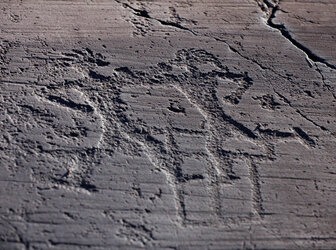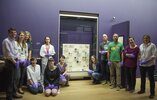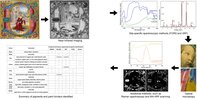MINIARE: Manuscript Illumination: Non-Invasive Analysis, Research, Expertise
The MINIARE project, led by the Fitzwilliam Museum (University of Cambridge), has revolutionised the understanding of manuscript heritage through next-generation scholarship and innovative protocols. By employing non-invasive analysis and cutting-edge technology, the project has ...
Read more
Project details
| Title: | MINIARE: Manuscript Illumination: Non-Invasive Analysis, Research, Expertise |
|---|---|
| Entr. year: | 2023 |
| Result: | Award |
| Country: | United Kingdom |
| Town: | University of Cambridge |
| Category type: | results of research, studies in the field of cultural heritage, study, a study or the results of research |
| Notes: | Through partnerships with institutions across the UK and Europe, the team has enhanced knowledge of collections and introduced new research methodologies. The public outputs, including the COLOUR exhibition and the ILLUMINATED online resource, have engaged both research and public audiences, presenting the scientific and art historical findings in captivating ways. Collaborating with Team Pigment (Durham University) on a ground-breaking study of British illuminators’ pigments further demonstrates the team’s commitment to advancing research in this field. The project MINIARE – Manuscript Illumination: Non-Invasive Analysis Research Expertise aligns with the Fitzwilliam Museum‘s mission of scholarly dissemination and community involvement. Their partnerships have been instrumental in launching the University-wide Collections-Connections-Communities initiative, which fosters research expertise and community engagement in heritage collections. Through extensive scholarly dissemination and public engagement programmes, the wonders of manuscript heritage have been brought to a wide audience. |
| Building type/ Project type: | cultural/natural heritage |
| Architect / Proj.leader: | Dr Suzanne Reynolds Project |
| The Jury's citation: | The MINIARE project showcases a rigorous scientific approach, providing a stellar example of how to handle these objects while developing a comprehensive protocol for non-invasive analysis. This breakthrough has not only enabled new connections but has also had a significant educational impact, with an important focus on both tangible and intangible heritage. The project’s achievements have brought to light crucial pieces of Europe’s cultural heritage, highlighting the materiality of art and solidifying the Fitzwilliam Museum’s reputation as a leader in the field. From a technological standpoint, the MINIARE project is truly remarkable, with its multifaceted layers of research and exploration. Its significance as a museum-led endeavour is important, demonstrating the vital role that museums play in preserving heritage. The project’s objectives have been successfully achieved, showcasing the exemplary outcomes that emerge from such a comprehensive and diligent approach. |
| Web, Links: | www.fitzmuseum.cam.ac.uk/research/projects/miniare |
Description:
The MINIARE project, led by the Fitzwilliam Museum (University of Cambridge), has revolutionised the understanding of manuscript heritage through next-generation scholarship and innovative protocols. By employing non-invasive analysis and cutting-edge technology, the project has identified artists’ materials and techniques, offering insights into cultural, political and socio-economic contexts like never before. The interdisciplinary approach, spanning physical sciences, arts and humanities, has been instrumental in advancing understanding of Europe’s shared heritage. The work was carried out between 2012 and 2022 with the support of core funding, research grants and philanthropic contributions. With a focus on non-invasive methods that preserve the integrity of the originals, over 280 illuminated manuscripts from diverse cultures and historical periods were analysed. The results demonstrated that medieval artists had a highly sophisticated understanding of both the physical properties and the semiotic power of their materials; and that they were part of an international network, exchanging ideas, books and materials. The project revolutionised understanding of manuscript illumination across the European Middle Ages, revealing the sophistication and exchange of ideas among artists.
Similar projects












